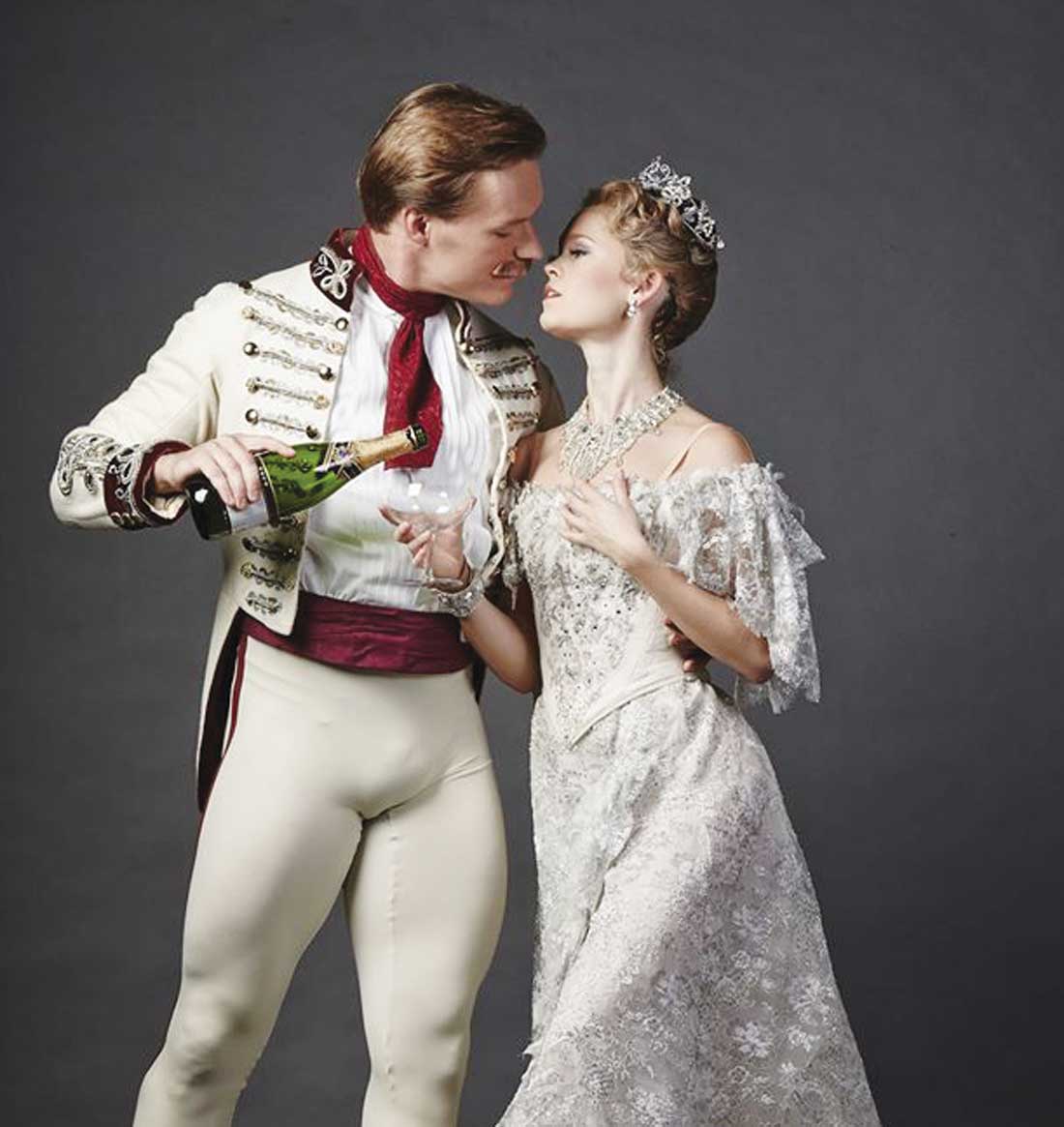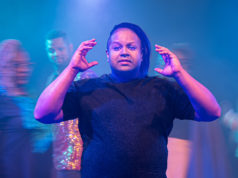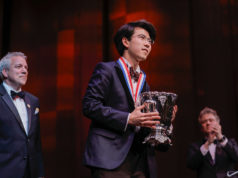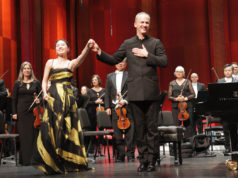Most people may know The Merry Widow as a Franz Lehar operetta sung on stage and screen. The engaging melodies have pleased countless audiences since its 1905 premiere. Fewer know it as a ballet, adapted and choreographed by Ronald Hynd for the Australian Ballet in 1975 and brought to London the next year as a vehicle for Margot Fonteyn. The three-act production pops up periodically in companies here and abroad, and Texas Ballet Theater gave it its first North Texas airing last weekend in Bass Performance Hall. Hynd was brought in to set his choreography, and a striking production from La Scala of Milan, designed by Roberta Guidi di Bagno, filled the stage.
Using classical vocabulary, this Merry Widow unfolded in traditional solos, duets, and large ensembles, exploring the challenges facing Hanna (the title character, danced Saturday night by Carolyn Judson), who emerges from mourning as an enormously wealthy woman. Suitors seem to arrive from every direction. The widow’s biggest surprise comes in seeing her first love, Count Danilo (danced by Carl Coomer), who turned her away years earlier when his family forbade his marrying a simple country girl with no assets. He is struck again by her beauty and new self-assurance. She wrestles with the stirrings of a love she thought long over.
Judson was a splendid Hanna. Elegant, stylish, and beautifully acted, this may have been her best all-around performance with TBT. Coomer, too, had a breakthrough performance, opening up dramatically for the first time that I’ve seen. He is a fine dancer but hasn’t brought a lot of personality to the table. As Danilo he created a compelling, full-blooded character.
Despite its fine plumage, the ballet is really an intimate drama tracing the bumpy relationship between Hanna and Danilo –– at one point, the person next to me commented, “She really isn’t a very merry widow.” And that’s true in the beginning. Emphasizing its personal nature, a subdued quality to the performance allowed the romance to shine. The choreography abounded in a variety of floating lifts and slow, elevated extensions of legs and arms. One staggering lift occurred in the final duet, with Coomer coming up behind Judson and lifting her under the arms straight up over his head –– and holding her there. Not for a couple of beats but for what seemed like a page or two of music, before turning and dropping her into his arms.
The national dances in the second act and the can-can-like entertainment in the third were also held back a bit so as not to overpower the drama. The lighting also was softened to scale down the effect of the busier, more involved numbers.
A subplot unveiled another rocky relationship between an aging Baron Zeta (Tom O’Keefe in a character role) and his young wife (Leticia Oliveira) who takes on a young lover (Jiyan Dai). Oliveira was as stunning as ever in her solos and dancing with Dai. Her usual spitfire showstoppers gave way to smooth, lyrical lines. Even a series of fouettes consisted of gentle floating turns instead of whip-snapping spins. Dai, like Coomer, expanded his dramatic presence this time around and gave a three-dimensional performance rather than just maneuvering the steps. In an interesting resolution to a thorny problem, the Baron forgave his wife and allowed her to continue the affair.
Unlike inthe ballets of Tchaikovsky, Prokofiev, and others, the final love scene with Judson and Coomer was not an explosive, athletic free-for-all to bring down the house. Rather it was a dimly lit, gentle adagio duet expressing the lovers’ feelings for each other. Musical accompaniment was just the orchestral strings, softly and slowing playing a familiar Lehar waltz, a perfect blend of music, movement, and mood creating a special few moments that brought tears to my eyes. This was ballet at its best, what it can be when everything falls together.
And things did come together wonderfully between dancers and music with Michael Moricz conducting the Fort Worth Symphony Orchestra in the pit. This was his third time leading the orchestra since it began working with TBT again, and it was arguably the most satisfying collaboration yet.












